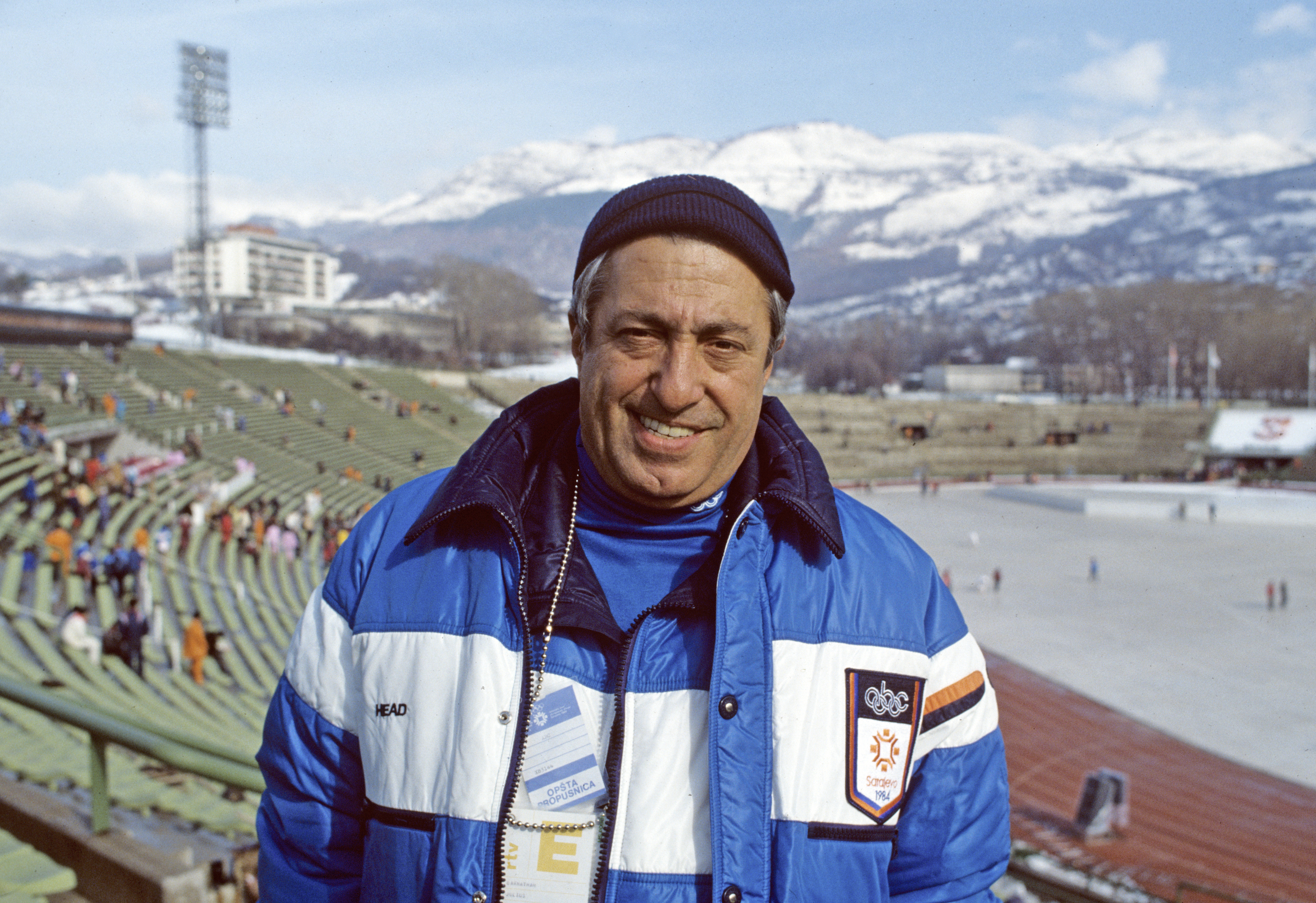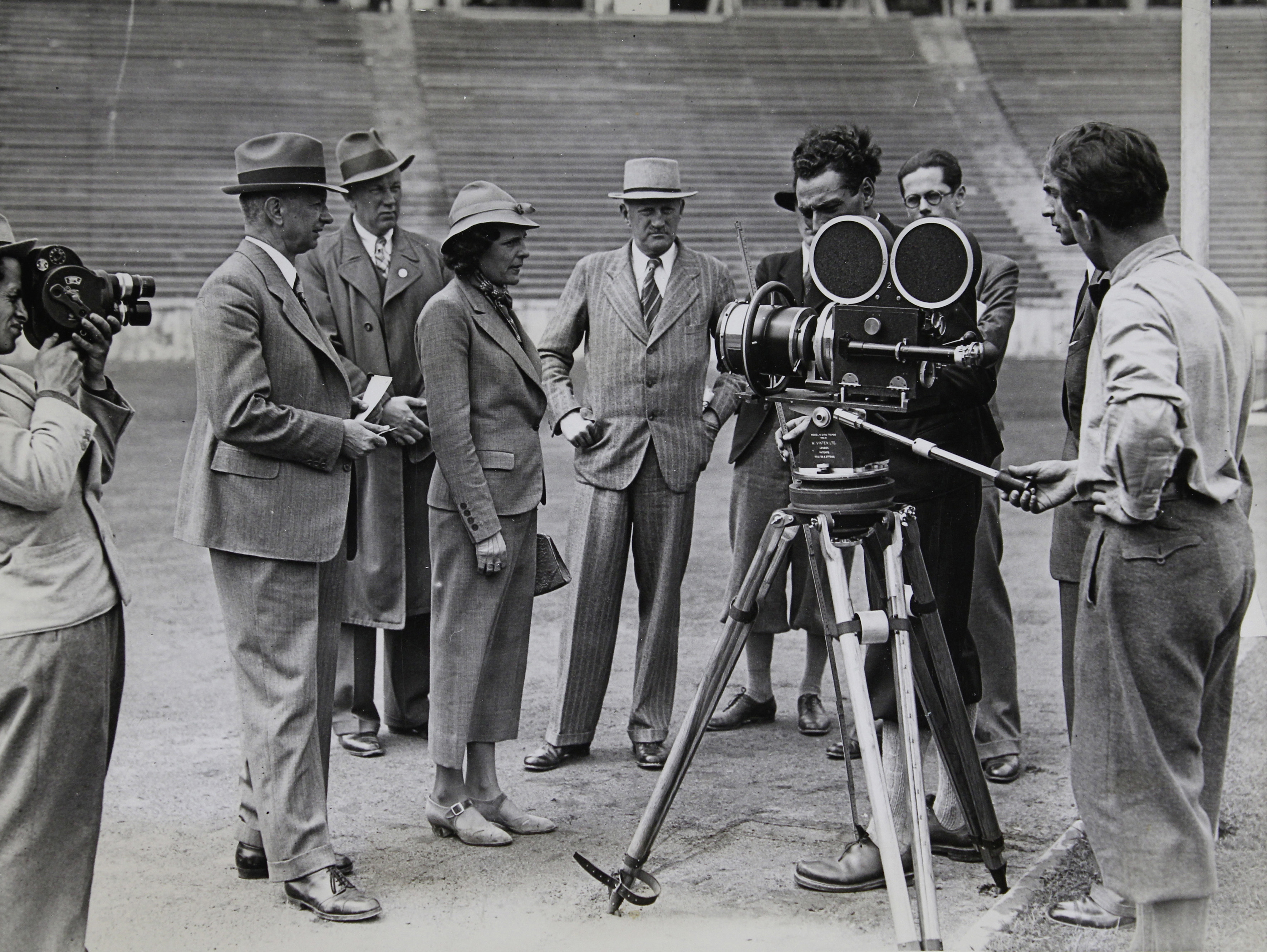Years of Olympic Games Emerge as a Timeline of Breakthrough Broadcast Technologies
There is no better gauge of cutting-edge engineering than in the world’s top athletic competitions

Since the first modern Olympic Games in 1896 at Athens, Greece, a steady drumbeat of new technology has emerged at the athletic events—beginning with a quest for more precise timing devices to today’s 4K television broadcasting with immersive sound.
In the beginning, new Olympics technology was all about athlete timing. That first year, 1896, the big technology launch was the newly invented stopwatch. It was sorely needed to record the times of the winners. The crude early stopwatches only timed to 0.2 of a second, though, and it would take years to improve their accuracy. During those early games, every stopwatch had a different timing result, causing major confusion and conflict.
The first company to take on the Olympics challenge for timing accuracy was Heuer (now TAG Heuer), which, in the 1920s, created the first stopwatch accurate to one-hundredth of a second. This device was called the Mikrograph Pocket Chronometer and it became the stopwatch of choice for timekeepers at the 1920, 1924 and 1928 Olympics. This lasted until electronic timekeeping replaced mechanical timers in the 1960s.
Film Tech Begins
At the 1900 Olympic Games in Paris, early film technology came into play. It was used to analyze the movement performance of the athletes. Étienne-Jules Marey employed a new technique called “chronophotography,” a process that captured movement over several film frames, which could be subsequently arranged like an animation.
In 1924, radio broadcasting began at the Paris Olympics. At the time, however, the lack of an international broadcasting standard meant the audience was limited mainly to radio receivers in France. Also, organizers feared that radio might have a negative impact on the sale of entry tickets, so radio’s beginnings were hindered.
Those fears, of course, were unfounded. Radio broadcasting of the Games developed rapidly. The 1936 Olympic Games in Berlin were covered in 28 languages in 2,500 broadcasts. By 1948, the radio coverage of the Olympic Games spanned the globe.
The first Olympic Games to be televised were the Berlin Olympics in 1936. The closed circuit telecast of events was shown on screens around Berlin, where more than 162,000 people viewed the events captured with three television cameras. This was also the first competition to use telex transmissions of results, and zeppelins were employed to quickly transport film newsreel footage to other European cities.
The professional video industry's #1 source for news, trends and product and tech information. Sign up below.

The 1936 Olympic Games in Berlin were immortalized by a full-length feature film, “Olympia,” produced by Leni Riefenstahl, the pioneering German filmmaker. Her production embraced many technical innovations, including an underwater camera, tracking shots, aerial images and multiple viewpoints of events.
The first Olympic Games to be telecast over-the-air into homes were the 1948 London Games, which were transmitted by the BBC within the British Isles. An audience of 500,000 people followed the competitions up to 125 miles away from the actual event.

Worldwide television came first to the Rome Olympics in 1960. Four years later, at the 1964 Tokyo Games, video was carried internationally without the need for videotapes to be flown overseas. The Games were telecast to the United States using Syncom 3, the first geostationary communication satellite. From there, the signal was beamed to Europe using Relay 1, an early low-orbit experimental communications satellite used to send transmissions across the Pacific Ocean.
Also, for the first time during the 1964 Games, an entire marathon race was broadcast live, close-pickup microphones enhanced the sound and slow-motion replays were used in the coverage. Swimmers using wearables could also measure movements and biomechanical patterns during training sessions. In 1964, the competitors’ times were first shown live on television.
In the 1976 Montreal Olympics, electronic scoreboards were used for display of real-time scores. In China, 2008, GPS was used for the first time in rowing competitions, allowing viewers to see the progress as the race progressed.
Each Olympic Games broadcast has progressively introduced new technical improvements, including the arrival of color television in the 1960s; high definition in 2008; and the more than 230 hours of live 3D broadcast in 2012. Dolby’s 5.1 surround sound soon dramatically improved the audio technology.
Mini Cameras, Closed Captioning
One of the key figures in the development of sports television was the late Julius Barnathan, ABC’s president of Broadcast Operations and Engineering. During his 40 years at the network, Barnathan—not an engineer himself—was responsible for many technical developments at the Olympics, including the use of handheld and miniature cameras at events and closed captioning for the deaf.
He is also credited with adapting slow-motion technology to color cameras, developing the use of long-lens cameras to capture events that take place over great distances and introducing the use of small square inset pictures behind reporters.
In the summer of 2021, NBC combined 4K, HDR and live, on-the-fly Dolby Atmos immersive sound. Though this feed was not available to most audiences, the breathtaking images were a major advance for Olympics’ technology and will soon be available to mass audiences.
Although individual broadcast networks had previously worked in a cloud environment when covering the Olympics, the 2021 Games in Tokyo were the first time Olympic Broadcasting Services used the cloud for broadcast production, a major shift from traditional satellite transmission. This allowed the broadcasts to overcome many limitations from the COVID-19 pandemic.
During 2021, the Olympic Broadcasting Services (OBS) produced more than 9,500 hours of content—30 percent more than during 2016 Rio Games. Some of that video content was in 8K resolution for the first time. Partnered with Alibaba Cloud, the OBS Cloud service transformed how the Olympic Games are broadcast to the widest possible audience.
Since 2010, tablets and smartphones connected to the internet have become a major viewing medium beyond traditional television. With these portable devices being carried everywhere, the fans throughout the world have become interconnected. Viewers can now share images and participate in the Olympic events via social networks.
Of the top five countries with the most passionate Olympics fans, the United States takes the top spot. That’s followed by the United Kingdom, Australia, Canada and Germany.
The Olympic Games, over the past 125 years, have developed into an impressive showcase for the latest media technology. There is no better gauge of cutting-edge engineering than in the world’s top athletic competitions.
Frank Beacham is an independent writer based in New York.

